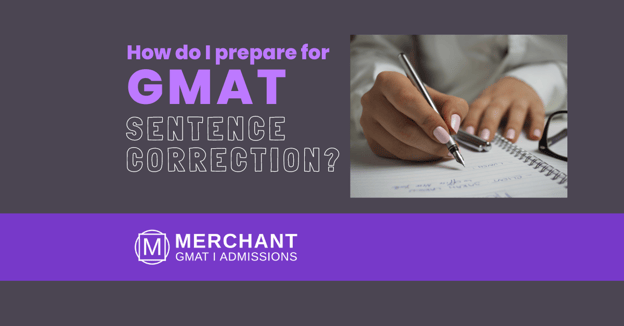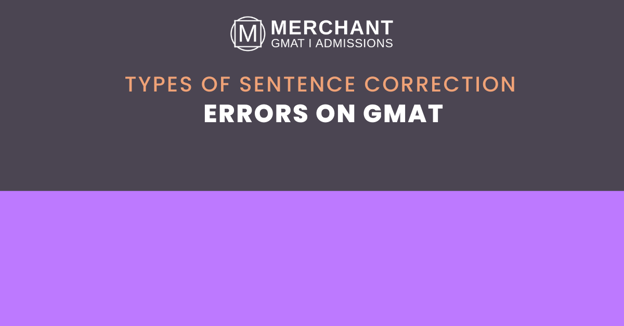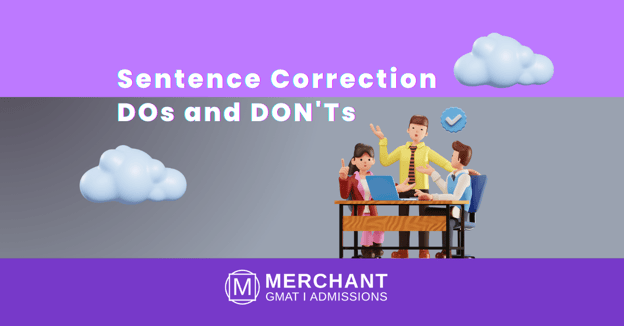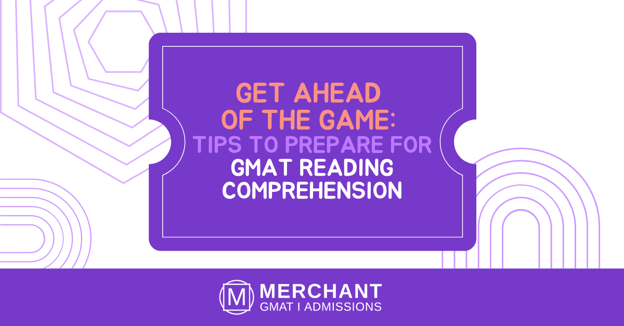GMAT Sentence Correction in Action: A Practical Example
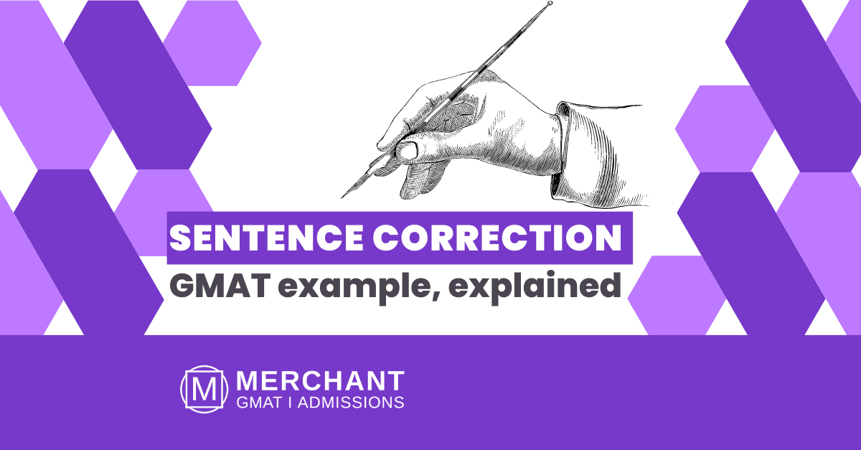
The GMAT Sentence Correction (SC) section can be one of the most intimidating parts of studying for the GMAT. It requires you to familiarize yourself with complex English grammar rules and use them to identify errors in seemingly perfect sentences. Learning this material takes considerable effort, but it pays off when you’re able to quickly identify what's wrong with a sentence on test day. In order to give you an idea of how to apply all those principles in practice, we'll provide an example that highlights a few typical features of the GMAT SC section. We hope it will help demystify this part of your preparation and make you more confident when tackling similar questions!
Outline the basics of GMAT Sentence Correction
GMAT SC is an important skill required for test-takers as it assesses their ability to understand and improve upon a sentence. It involves making sure that the sentence conveys its intended meaning, is properly phrased and free of errors. The right way to approach a SC question is to read the entire sentence carefully, identify the grammar topics underlying the sentence as well as potential errors in grammar, diction and context, and then try to formulate the best possible version of the given sentence. Next, you start eliminating the ungrammatical choices. Each answer option should be correctly evaluated on the basis of adhering to rules of English language usage. Additionally, take into consideration if any specific words are used incorrectly or if any other punctuation or structure needs correction. GMAT SC is an effective test of grammar, word choice and overall accuracy in writing that can help improve your ability to edit your own work for the future.
Breakdown of our practical example
Let's start with a real-life GMAT SC sentence:
“The ability of scientists to provide models of the origins of life on Earth have greatly improved in recent years, but these models continue to be the subject of much debate”.
You may have answer choices alternating between the following options:
“The ability of scientists to provide models of the origins of life on Earth have greatly improved in recent years, but these models continue to be the subject of much debate” (same as the sentence above)
“The ability of scientists to provide models of the origins of life on Earth has greatly improved in recent years, but these models continue to be the subject of much debate”.
This sentence contains an error in subject-verb agreement. The subject is "ability," which is singular, but the verb is "have," which is plural. The correct verb should be "has." This is a common mistake that many test-takers make on the GMAT SC section.
Step-by-step walkthrough
Here is a step-by-step guide on how to approach a GMAT SC question:
- Read the entire sentence carefully, paying attention to the subject-verb agreement, parallelism, and modifier placement. Make sure you identify the grammar topics you will have to deal with. You can look out for keywords alerting you to that topic. For example, words such as “like”, “unlike”, “whereas”, “compared to”, etc. signal the presence of a comparison. Scanning through the answer choices to spot differences among them is also useful to identify the grammar topic at play.
- Identify any errors in the sentence. You do this by activating the specific rules related to the topic. For example, in comparisons, the rule is that the two elements being compared should have the same grammatical form.
- Eliminate answer choices that contain grammatical errors or that don't make sense in the context of the sentence.
- Choose the answer that corrects the error and is the most clear and concise.
It is essential to identify the grammatical rules being tested in the sentence, such as subject-verb agreement, parallelism, and modifier placement. Test-takers should also look for common mistakes, such as using the wrong verb tense and misusing pronouns.
Using the example question, let's illustrate each step in the process:
- You will read the sentence and scan through the answer choices in order to identify the grammar topic you will have to work on. Noticing that some options include the verb in the singular form and other options, the verb in the plural form, you can be certain that the topic is subject-verb agreement.
- The sentence's subject-verb agreement is incorrect. The error is that the singular subject "ability" takes the plural verb "have" instead of the singular verb "has."
- You eliminate answer choices that use "have" because these options are incorrect.
- The answer choice that corrects the error is "The ability of scientists to provide models of the origins of life on Earth has greatly improved in recent years, but these models continue to be the subject of much debate."
When eliminating answer choices, it is helpful to look for any choices that contain obvious errors, such as subject-verb disagreement or modifier placement. Eliminating these options can help narrow down the choices and make it easier to evaluate the remaining answers. To identify grammatical errors - remember you can have up to three errors in one sentence - it is important to have a good understanding of common grammar rules, such as subject-verb agreement, parallelism, and modifier placement. For example, subject-verb agreement errors occur when the subject and verb in a sentence do not agree in number, while comparison errors occur when the elements being compared are not presented in a parallel structure (i.e., the same grammatical form).
To summarize, the GMAT SC section is a crucial part of preparing for your exam and diving deeper into your verbal communication skills. While it can be daunting at first, with some practice and consistency you can quickly understand the logic of the questions and effectively evaluate the best answer. Additionally, there are common mistakes that people make when tackling these problems so becoming aware of those areas will only help you better succeed during your test. Merchant GMAT & Admissions coaches have proven results helping people to confidently ace this section of their GMAT. So if you’re looking to take advantage of full-length virtual classes or one-on-one training sessions tailored to your individual needs, start your GMAT journey today with expert coaching from Merchant GMAT & Admissions.


